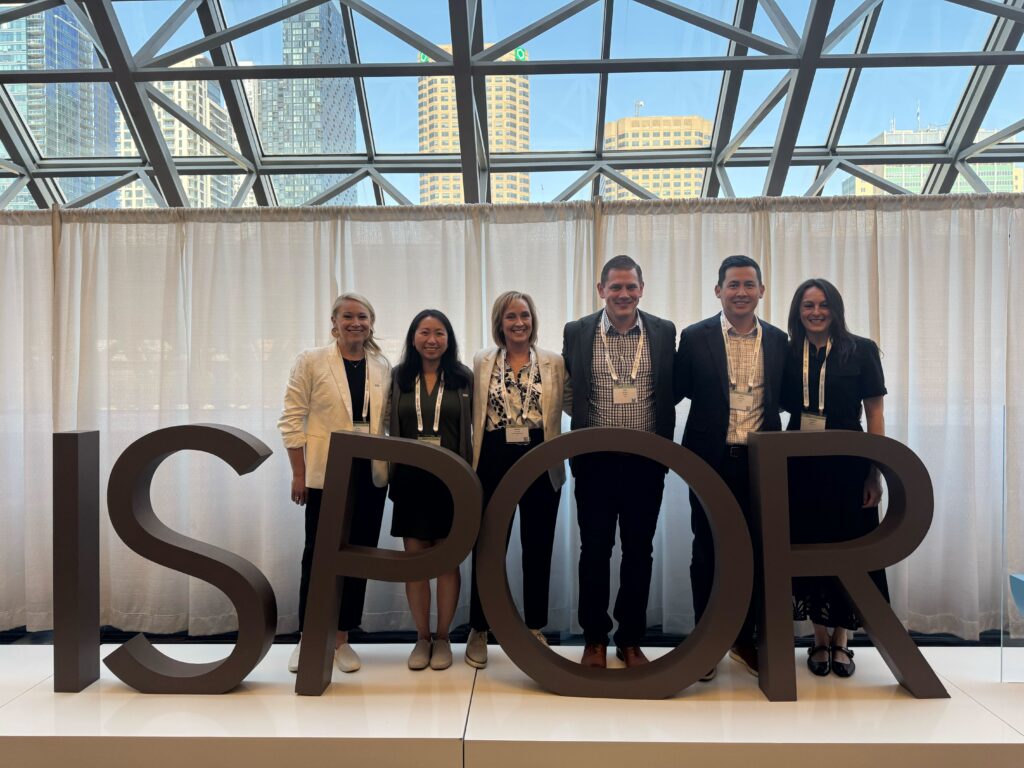Each year, ISPOR brings together members of the health economics and outcomes research (HEOR) community for a celebration of the latest research and innovative methodology to push forward data-driven, patient-centered decision-making across the life sciences.

It’s an event that never disappoints. Between the presentations of innovative research projects, experts sharing their knowledge in information sessions, and serendipitous meetups with former colleagues and friends, ISPOR is one of my favorite conferences to attend.
This year, we convened in Montreal to explore strategies for expanding the horizons of HEOR research – a critical necessity as health systems, pharma companies, and data companies continue to undergo significant transformation.
After many fruitful discussions with current and future partners across the pharma community, here are some of my top takeaways from the event.
Priority number one? Derisking the drug development cycle.
Uncertainty has always been a fact of life in the R&D arena, and risk is simply part of the process. But recent events on both the domestic and global scale have amped up concerns that a rapidly changing financial and regulatory ecosystem will present additional challenges for bringing new products to market in a cost-effective way.
As a result, sponsors are looking for additional ways to extract maximum value for their data and research dollars and remove risk from the equation, from re-examining their decision-making workflows to adding more real-world evidence (RWE) into the process as early as possible to increase the certainty that they’re on the right path.
Internal teams are now being asked to provide more robust evidence sooner in the R&D lifecycle so leaders can be confident about where, when, and how they are investing their resources. The “so what?” has never been more important as companies look to reduce as much risk as possible.
However, companies will need to be careful that de-risking doesn’t turn into analysis paralysis. Answering risk-related questions takes time and resources, too, so sponsors have to balance the risks with the rewards of moving forward in a timely manner with as much confidence as possible.
The search for big data is turning into a quest for the best data
Just a few short years ago, pharma companies were buying up as much data as possible to find the right patients for their studies. Companies would snap up millions of closed claims at a time, with the expectation that somewhere within the massive volume of data, important patterns would reveal themselves.
However, sponsors are now slicing and dicing their data in new ways, and they’re not always disease specific. For example, companies might now ask for datasets for patients with any cancer that can be treated with a CAR-T, or those with tumors that exhibit a certain biomarker, so they can explore how to best deploy highly targeted, next-generation treatments regardless of the site of origin of the disease.
There is a growing emphasis on identifying more precisely defined patient cohorts. This evolution underscores a critical moment for data companies, not only to remain agile but to reimagine how they extract, curate, and deliver real-world data in ways that truly support the needs of our research partners.
What makes real-world data ready for regulatory use?
The definition of “regulatory grade” RWD and RWE is an ongoing topic of conversation at ISPOR and elsewhere. What makes RWD and RWE suitable for inclusion in the approvals or post-market surveillance processes?
The industry has not yet settled on a cut-and-dried definition, since there are so many variables involved for each unique use case. As companies continue to express strong interest in external control arms (ECAs), and RWD becomes more important for supporting artificial intelligence (AI) tools to help optimize the clinical trial and drug development processes, it’s important to work toward a consensus across the pharma and regulatory communities.
At COTA, we’re proud to maintain a long-standing partnership with the FDA to advance the use of real-world data (RWD) in oncology. In addition, we actively collaborate with cross-industry groups such as Friends of Cancer Research and the Clinical Research Data Sharing Alliance. These efforts help shape best practices and ensure our data meets the rigorous standards required for regulatory use, underscoring our commitment to delivering regulatory-ready RWD that can drive meaningful progress in cancer research and treatment.
Overall, ISPOR 2025 was a great success, filled with opportunities to learn, share, and connect with other professionals passionate about HEOR and its essential role in bringing effective treatments to patients in a speedy, safe, and cost-effective manner.